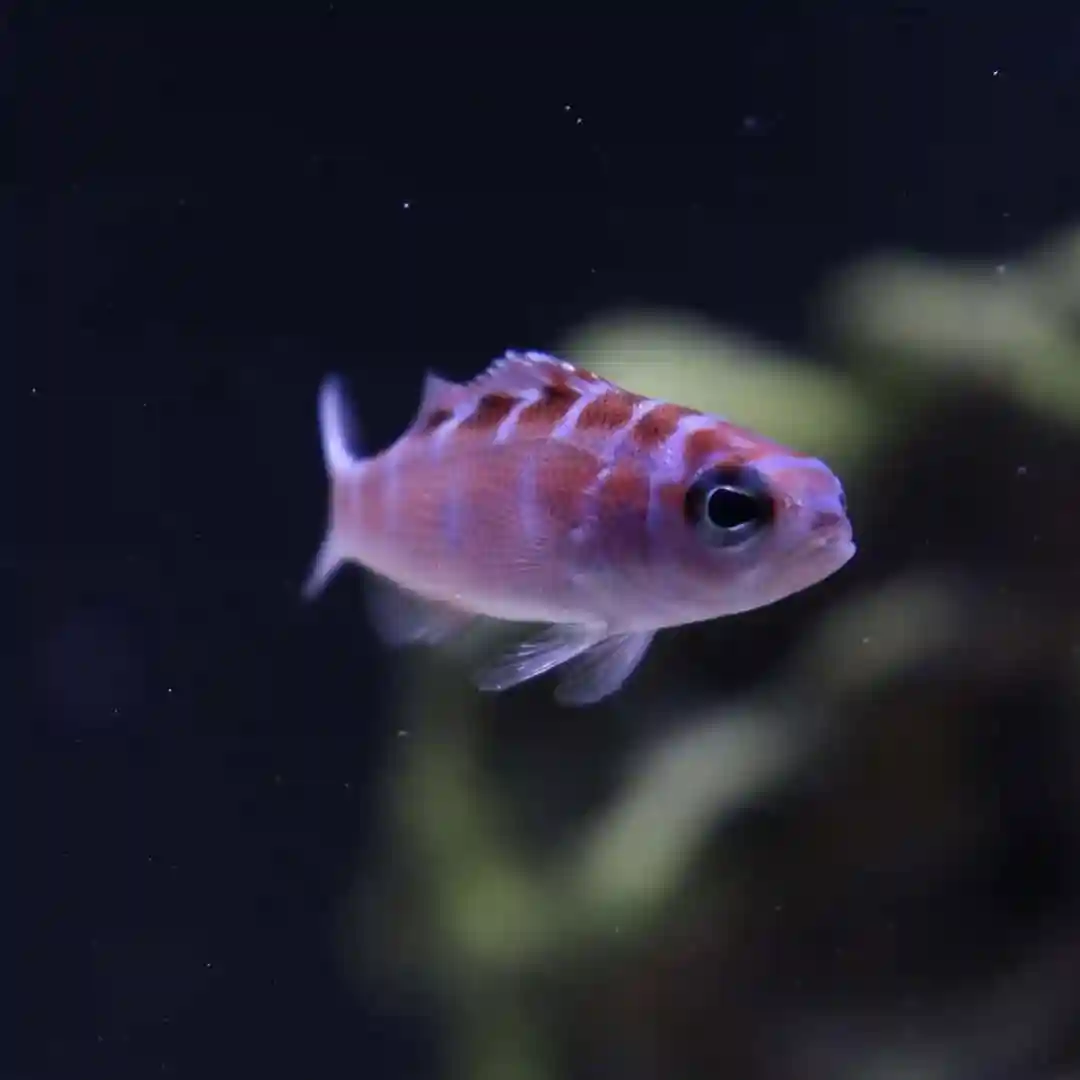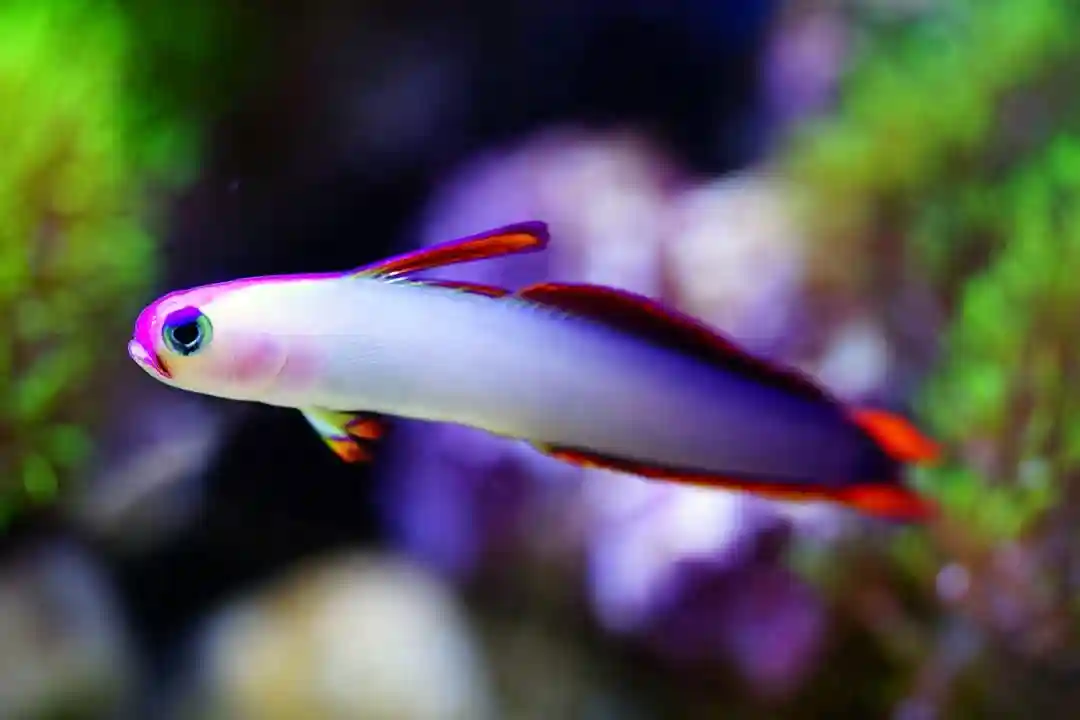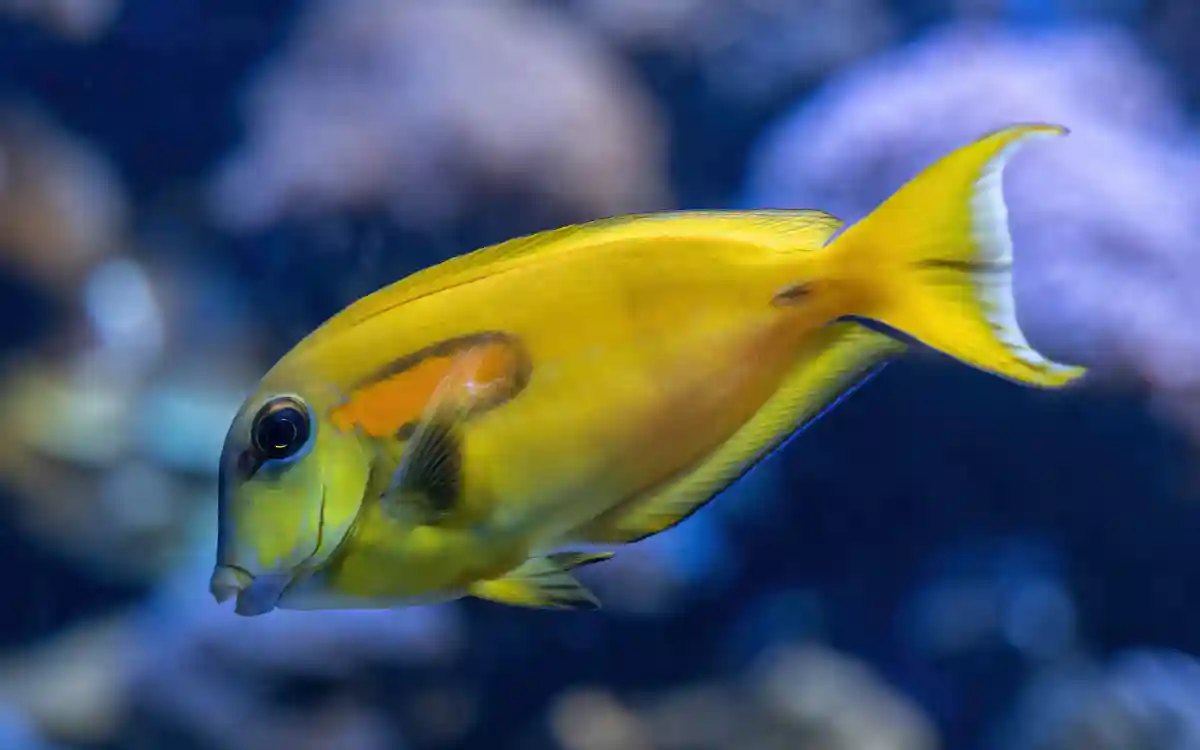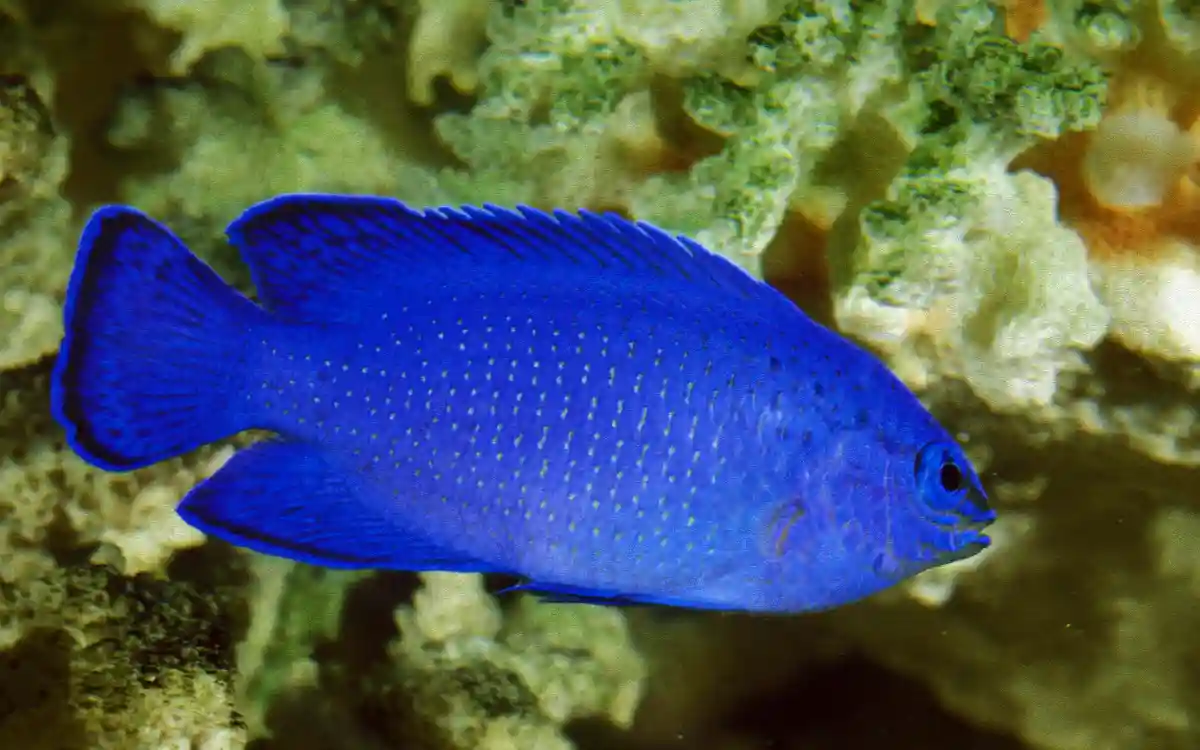Foxface Rabbitfish 101: Feeding, Tank Mates, Venom & More
The Foxface Rabbitfish (Siganus vulpinus) is one of the most useful and visually striking additions to a saltwater aquarium. Known for its bold yellow body, expressive black-and-white face, and peaceful temperament, the Foxface brings both utility and beauty to reef and FOWLR setups. But it also has a hidden side: venomous dorsal spines that demand respectful handling. In this guide, you’ll learn how to care for a Foxface Rabbitfish properly, what it eats, how long it lives, which tank mates work best, and what to do if you’re ever on the receiving end of its venomous sting.
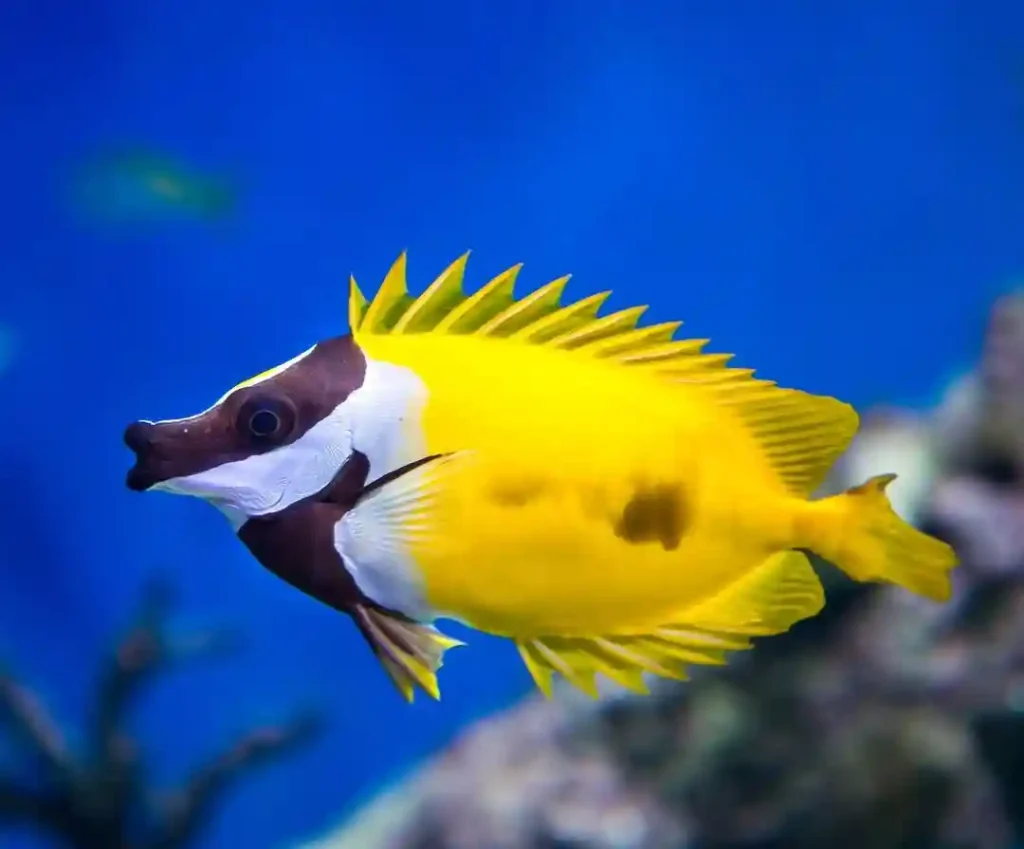
Quick Species Profile
| Trait | Details |
| Common Name | Foxface Rabbitfish |
| Scientific Name | Siganus vulpinus |
| Origin | Western Pacific, coral reefs |
| Size | Up to 9 inches |
| Lifespan | 5–10 years |
| Temperament | Peaceful |
| Diet | Herbivorous (algae-focused) |
| Minimum Tank Size | 75 gallons |
| Reef-Safe | With caution |
| Venomous | Yes – dorsal spines |
| Care Level | Easy to Intermediate |
Appearance and Behavior
The Foxface Rabbitfish gets its name from its long, pointed snout and alert expression, often compared to that of a fox. Its bright yellow body contrasts sharply with a dramatic black mask that stretches across its face and down to the pectoral fins. This makes it stand out even in tanks filled with colorful reef life.
In terms of behavior, Foxface Rabbitfish are generally peaceful. They are active swimmers and love to graze on algae throughout the day. When startled, they may flash their venomous dorsal spines and quickly retreat into the rockwork. These color and posture changes are stress signals and are completely normal.
While they school in the wild, a single Foxface does just fine in a home aquarium. In larger tanks, some hobbyists have had success keeping bonded pairs, but introducing more than one can lead to territorial disputes unless the tank is over 150 gallons.
Tank Requirements and Environment
Foxface Rabbitfish are large-bodied fish that need swimming room and natural grazing surfaces. A minimum of 75 gallons is required, though more space is always better. The aquascape should include live rock with crevices and caves, offering both hiding places and algae to feed on.
A moderate to strong current helps mimic natural reef conditions. Lighting isn’t critical for the fish itself, but if you’re growing macroalgae or housing corals, proper reef lighting should be considered.
Stable water conditions are essential. The ideal parameters are:
- Temperature: 72–78°F
- pH: 8.1–8.4
- Salinity: 1.020–1.025
- Nitrate: < 20 ppm
Weekly water changes and routine testing help avoid stress-related health issues. Because this species grazes constantly, having live rock with surface algae supports natural behavior between feedings.
Diet and Feeding Habits
Foxface Rabbitfish are primarily herbivores and among the best natural algae controllers in the hobby. In well-established tanks, they will graze continuously on green film algae, hair algae, and macroalgae.
To ensure balanced nutrition, supplement their diet with dried seaweed sheets (nori), spirulina flakes, and angelfish pellets. A veggie clip works great to hold seaweed in place and encourages natural foraging behavior.
Although they are herbivores, occasional meaty foods like mysis shrimp or brine shrimp can be offered a couple of times per week. Feedings should occur two to three times daily. Well-fed Foxface Rabbitfish are less likely to pick at soft corals or polyps, making diet a key factor in maintaining a reef-safe tank.
Compatibility and Tank Mates
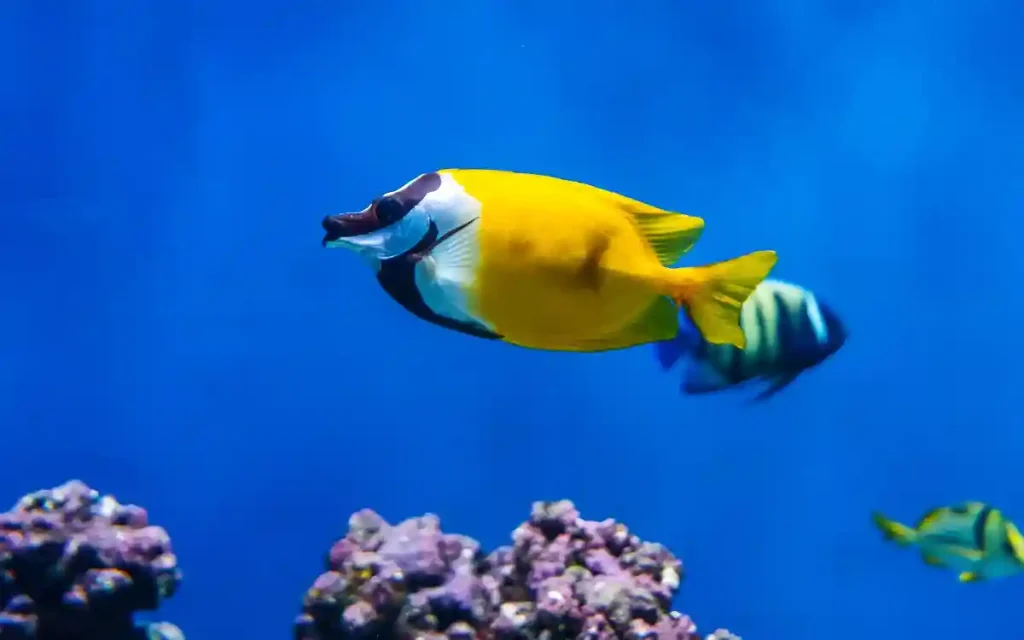
This species is generally peaceful and mixes well with other non-aggressive fish. Ideal tank mates include clownfish, tangs, wrasses, cardinalfish, gobies, and anthias. Because of their venomous defense, most tankmates leave them alone.
Avoid pairing Foxface Rabbitfish with other rabbitfish unless you have a very large tank. Space and territory are crucial. Also avoid large predators such as triggers or groupers, which may attempt to nip or chase, stressing the Foxface into frequent defensive displays.
While they rarely bother invertebrates, a hungry or underfed Foxface may occasionally test soft corals or feather dusters. Keeping them well-fed reduces this behavior significantly.
Venom and Handling Precautions
One of the most important things to know about the Foxface Rabbitfish is its venomous dorsal spines. These spines aren’t used offensively but are always at the ready if the fish feels threatened.
The venom is not considered life-threatening to humans but can cause intense pain, swelling, and numbness. If stung, immerse the affected area in hot (but not scalding) water for 30 to 90 minutes. This helps break down the venom proteins. Seek medical attention if swelling spreads or allergic symptoms develop.
Never try to catch a Foxface with your bare hands. Always use a soft fish trap or a container. During tank maintenance, be mindful of its location, especially if it tends to hide behind or under rocks.
Lifespan and Health
With proper care, a Foxface Rabbitfish can live between five and ten years in a home aquarium. These fish are hardy but can be sensitive to poor oxygen levels and sudden changes in water chemistry.
Signs of illness may include faded coloration, rapid breathing, or refusal to eat. They are susceptible to marine ich and bacterial infections, especially when stressed. As with all new additions, quarantining your Foxface for two weeks before adding it to the main display tank is a good practice.
Providing a stress-free environment with clean water and consistent feeding helps them maintain their color, behavior, and immune system.
Are They Reef-Safe?
Foxface Rabbitfish are typically considered reef-safe with caution. While they don’t usually nip at hard corals or SPS species, underfed individuals may go after soft corals, zoanthids, and other fleshy polyps.
The key is to keep them full and distracted with algae and seaweed sheets. If you’re running a mixed reef and want to reduce risk, avoid housing them with prized LPS or delicate softies unless you’ve had good experience.
Many reefers report no issues at all, while others see occasional “testing” behavior. It often comes down to how well-fed and well-accommodated the fish is.
Breeding in Home Aquariums
Breeding Foxface Rabbitfish in captivity is extremely rare and has not been reliably done in home setups. These fish are open-water spawners, meaning they release eggs and sperm into the water column during synchronized swims at dusk.
This behavior requires very large systems, calm tank conditions, and often a specific lunar cycle to trigger. As of now, there are no consistent hobbyist breeding protocols available, so your focus should be on long-term care and health rather than reproduction.
Interesting Facts About Foxface Rabbitfish
- The “foxface” nickname comes from their long snout and intelligent expression.
- They use rapid color changes to signal stress or sleep, sometimes fading to a mottled brown or gray.
- Their venomous spines are mainly a defense mechanism, not used aggressively.
- In large tanks, they may show signs of social behavior with tangs or other algae grazers.
- They’re often used in reef tanks as a natural and effective algae solution.
Frequently Asked Questions
Is the Foxface Rabbitfish aggressive?
No, it’s a peaceful species that generally avoids confrontation, using its spines only in defense.
Can I keep it in a reef tank?
Yes, but with caution. Feed it well to reduce the risk of coral nipping.
How big does it get?
It can grow up to 9 inches in length, so plan your tank size accordingly.
What’s the best food for them?
Nori, spirulina flakes, and marine algae are ideal. Add occasional meaty treats like mysis shrimp.
Can I keep more than one?
Only in very large tanks. Two Foxface Rabbitfish may fight if space is limited.
Final Thoughts
The Foxface Rabbitfish is a stunning, practical, and generally peaceful addition to large saltwater aquariums. It excels at algae control, adapts well to different environments, and adds a dramatic splash of yellow to your display. While its venomous spines require some caution, it’s a manageable species for aquarists with a bit of experience. Keep it fed, give it space, and enjoy one of the most unique fish in the hobby.


